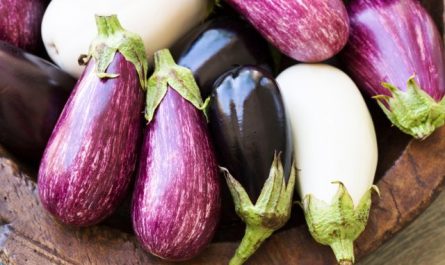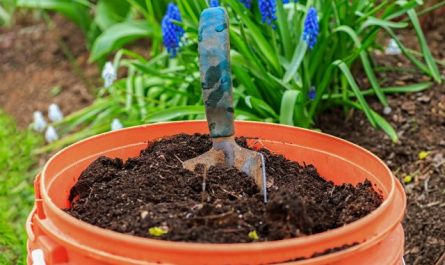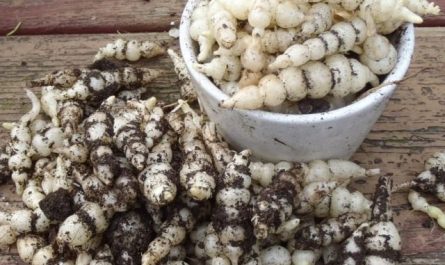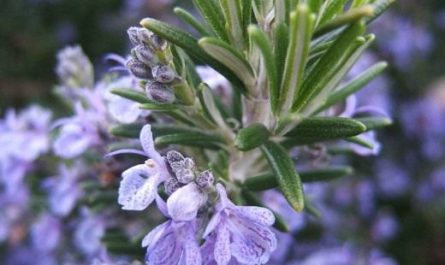The last month of summer is tense to the limit: harvesting, the endless fight against new generations of pests, the beginning of new plantings and harvesting, harvesting, harvesting. If you add to this the need to get the children ready for school, then only a select few get to see the beauty of the sunset of summer. The main thing is not to forget anything. Well, at least the most basic, urgent things. That’s what this cheat sheet is for.

What to do in the garden in August?
- Still (or again) crops.
- Protection from parasites.
- Short haircut.
- Onion and garlic operations.
- Watering is not for everyone.
1. Still (or again) crops
And don’t think that the sowing in August is already over! There is still a month ahead, maybe even two, of quite suitable weather for many greens and some root crops.
We sow in the vacated spaces:
- dill,
- cilantro,
- salad,
- arugula,
- spinach,
- chard,
- daikon
- radish,
- radish
- turnip,
- chard,
- pak choi cabbage,
- mizuna and mibuna,
- kale.

The varieties are selected depending on the region – early or mid-season. Sowing in a greenhouse will significantly prolong the consumption of greens. There, cucumbers can be sown in early August. In the south, where it is hot in August, it is good to cover the crops with shading nets – and less moisture will evaporate, and there will be no particular overheating. You can also use thin covering material, it is especially good in areas with large daily temperature differences.
2. Protection from parasites
By August, a new generation of pests usually arrives in the gardens. They are noticeably more numerous than their parents who survived the cold season. And they all want to eat. So we don’t part with the sprayer in August. Especially since August dew also contributes to the development of fungal diseases.
Since the harvest is in full swing and you would like to eat it without poisoning, it is better to use the most environmentally friendly options:
- pheromone traps;
- biopesticides;
- infusion of ash, garlic, onion;
- milk whey.
Ash infusion will also serve as a wonderful foliar fertilizer, which is absorbed much faster and more effectively than root fertilizer.
3. Short haircut
Summer will soon be over and tropical plants growing here as annuals need to be clearly explained that it is time to wind down their activities. Cut off the tops of pumpkins, melons, and watermelons three nodes after the fist-sized ovary. Depending on the region (how much summer is left), remove the flowers from tomatoes, peppers, and eggplants if the fruits no longer have a chance to ripen. Let them focus on ripening what they have.
4. Onion and garlic operations
Onions and garlic in the southern regions have long been pulled out; in cooler zones, these operations are performed in early August. If rain is expected, it is better to pull out onions and garlic even a little earlier. In general, a signal for pulling out onions is a thinning neck and lodging of the feather, and for garlic – a burst inflorescence wrapper. Both onions and garlic need to be well dried in a shady, dry, ventilated place before storing.
5. Watering is not for everyone
Fortunately, watering in August is not as intensive as in previous months. Cabbage and greens, eggplants, zucchini, cucumbers and melons still require a lot of water. But tomatoes, peppers, beets, carrots, pumpkins and watermelons do not need much pampering – let them accumulate sugars, not water. Well, harvesting and preparations – that goes without saying.
What to do in the garden in August?
- Installation of supports
- Removal of diseased fruits
- Feeding
- Protection from birds, insects, fungi
- Post-harvest processing
- Graft

1. Installing the supports
In August, the garden generously thanks for care – so much so that the branches break. To prevent them from breaking, you need to put supports in the form of forks, and then decide: is it necessary in such quantity? If not – in winter, study the issue of radical pruning.
2. Removal of diseased fruits
As the fruits ripen, they require regular harvesting, removing any fruits found damaged by pests or fungi hanging on the tree – they will certainly share their diseases with their neighbors. Including fruits damaged by birds – fungi will certainly settle on them.
3. Protection from birds, insects, fungi
Ripening of fruits is a very energy-consuming process for a tree, it spends a huge amount of resources on it. As a result, it weakens and there is no longer enough strength to fight all sorts of parasites. It is advisable to help trees. Spray ash infusion on the leaves, hang all sorts of sparkles-rustles-eyes from birds, pheromone traps from pests.
It would be a good idea to place plastic bottles filled with fermented compote and cut-out holes in the crowns. Many insects are attracted to the mash. Don’t forget to add some liquid soap there.
Those who wish can spray the trees with biopesticides, there are many of them on sale now.
In August, trees lay fruit buds for the future harvest, so in addition to foliar feeding, it would be a good idea to feed the roots as well. They don’t need nitrogen at all, they need phosphorus and potassium. Or universal ash – 3 cups per 1 sq. meter.
4. Mulching
It is useful to mulch the trunk circle (not close to the trunk) with hay, wood chips with the addition of strong-smelling plants – pyrethrum, wormwood, cut tops, leaves and side shoots of tomatoes, waste from peeling onions and garlic. Even the larvae from the fallen fruit will be disgusted to crawl into this unpleasant pile. And the pests will try to spend the winter at a distance.
5. Post-harvest processing
It is time to treat cherries, sweet cherries, apricots, cherry plums and early apple trees that have borne fruit with fungicides – fungal diseases develop rapidly in summer. If there are fruits affected by moniliosis hanging on the upper branches, they must be removed to prevent them from spreading spores.
6. Vaccination
The beginning of August is a favorable time for budding. If your neighbors or friends have an enviable tree, now is the time to borrow a ripened branch and graft the buds (several to be sure) onto suitable trees in your garden.
What to do in a berry field in August?
- Post-harvest care of currants, raspberries and blackberries
- Operations on remontant raspberries
- Caring for garden strawberries
- Protecting Blueberries from Birds
- Operations on the vineyard
- Other necessary work

1. Post-harvest care
The currants have finished fruiting, the tedious harvesting and preparation of the vitamin berry is, fortunately, behind us. It is worth taking care of preparing the leaves for tea and ensuring fruiting in the next season. Cut out old shoots, thin out young ones, pluck healthy leaves from the cut shoots for drying. Pour a glass of ash per plant around the bushes, water, mulch thickly with hay. The currants will be very grateful if you sometimes stuff potato and sweet potato peelings under the hay – they really like starch.
2. Operations on remontant raspberries
The same is true for once-bearing raspberries, blackberries and raspberries.
Remontant ones require specific care. If raspberries are grown as a tutimer (fruiting on last year’s and new shoots), then it’s time to cut out the old ones, feed the new ones, thin them out and pinch them.
If raspberries are intended for one-time fruiting on annual shoots, the care is standard – fertilizing, removing excess shoots, shaping, tying, pest control. Raspberries, like currants, love good mulching, generous watering and starchy treats. In the process of thinning, do not forget to collect leaves for winter warming tea.
3. Caring for garden strawberries
Everyone’s favorite – large-fruited garden strawberries in August require special care. If 3 years have passed since planting, it’s time to renew the plantation. From the beginning of August, a new place for planting is prepared, and from the middle of the month it’s time to plant new bushes. If your varieties are quite satisfactory, runners from strong young bushes are suitable for renewal, if you want new ones – you can crawl through catalogs to your heart’s content, find what you want. In the south, this event is postponed for a month – too hot and dry.
For those who are not yet familiar with zemklunika, I highly recommend getting acquainted, it will definitely please with its taste. Remontant varieties enter another round of fruiting, they require special attention: feeding, watering, processing, protection from birds.
4. Protecting blueberries from birds
Tall blueberries also need to be protected from birds; their fruiting is in full swing at the beginning of the month. There are many fans, so the most reliable option would be to cover them with nets from birds. Do not forget to water them regularly and feed them with specific fertilizers. Mulching is also very useful, but again, with specific materials.
5. Operations on the vineyard
Grapes begin to ripen in August, there is a lot of fuss with them: removing side shoots and growing tops, shading leaves. In August, grapes begin to suffer from all diseases at once, they are especially weak to fungal diseases, therefore regular treatments with biofungicides and foliar feeding with ash infusion are mandatory.
Actinidia still have the health of wild plants, so in August they will only require the removal of excess leaves and shoots for better illumination of the berries, and regular harvesting.
Of the other berries, viburnum requires regular treatment, otherwise leaf beetles will eat it to an indecent state. You can spray it with an infusion of hot pepper – no harm to the environment, and the leaf beetles are disgusted.
What to do in a flower garden in August?
- August sowing
- Seed collection
- Seating and planting of early flowering plants
- Garter of accelerators
- Removing inflorescences
- Treatment against diseases and pests
- Photographing

August in the garden is a floral splendor. Bright, flashy, generous. And in the evenings the delightful aroma of phloxes hangs over the garden. With all the late summer worries, it is necessary to carve out evenings for contemplation and enjoyment – there is very little summer left. And in the daytime – to work!
1. August sowing
At the beginning of the month, you can still sow biennials and perennials. At the end of the month, you will need to plant those that were planted in July and have already grown. Mark the planting sites – as practice shows, by spring everything is safely forgotten.
Mid-August is a good time to sow lawn mixtures. If a new lawn is planned, or the old one requires repair, now is the time.
For the plants you like, both annuals and perennials, you can leave a few inflorescences for the seeds to ripen. You will only need to watch them carefully, or make gauze “caps” for them so that the seeds do not spill out onto the ground when they ripen.
2. Seating and planting early flowering plants
It’s time to divide and plant (or buy and plant) peonies, irises, primroses, and all other perennials that have finished blooming and rested a bit by this time. August is the beginning of a generous division with familiar gardeners.
Closer to September it will be time to plant spring-flowering small bulbous plants.:
- muscari,
- Scylla,
- galanthus,
- crocuses,
- Chionodoxa,
- What is it?
3. Garter of accelerators
Installing supports and tying up are very necessary operations in August. Dahlias tend to fall over from the wind, gladioli stems are unable to hold up huge inflorescences. Hydrangeas with their huge caps fall apart in different directions. Terry rudbeckias do not want to stand upright on their own. In general, in every garden there are plants that require support.
4. Removing inflorescences
At the beginning of the month, faded inflorescences that are not intended for seeds are necessarily removed. Plants from the axils will grow new flower shoots. But at the end of the month, these operations on perennials will need to be stopped – it is better to let them prepare for winter.
5. Treatment against diseases and pests
August dews are beautiful and romantic, and most of all, a variety of mushrooms enjoy them. Including pathogenic ones. They have population explosions here and there. You need to monitor them carefully and take measures immediately upon detecting the first signs of damage. It is advisable to alternate fungicides so that the mushrooms do not form stable populations.
You will also have to step up the fight against insect pests that try to nibble on leaves and flowers – by the end of summer, new generations have emerged, there are many of them and they want to eat. It is better to use biopesticides to fight them, so as not to poison the lives of beneficial insects along with the pests.
And be sure to take pictures of everything! As much detail as possible. In the spring, during the gardening and shopping seasonal madness, look through the photos and be surprised at how much there is already, but there is no space at all.




















